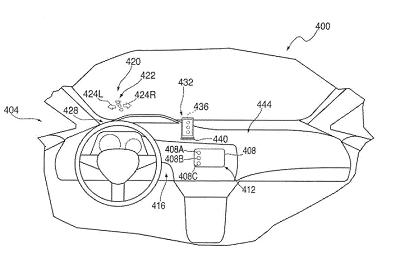
This technology describes apparatuses, systems and methods for controlling traffic flow at intersections through the use of vehicle-to-vehicle (V2V) communications systems, and a system for self-organizing, ad-hoc determination and communication of right-of-way queuing at such intersections. It comprises a highly adaptable and low-cost method for achieving dynamic control over traffic flow at intersections, avoiding the use of fixed infrastructure such as poles, lamps, sensors, electric power networks and controller nodes. Those expensive infrastructures can be substituted by low cost in-vehicle traffic lights.
Greater efficiencies in traffic control are achieved by optimizing the cycle duration, green split ratio, and synchronization of consecutive traffic lights in urban areas. In addition, more sophisticated traffic lights system also exist that have an adaptive behavior as a function of data coming from sensors, such as cameras or loop detectors, which generate variable cycle parameters in real-time to further improve traffic efficiency. In some cities, these sensor-based traffic lights are connected to a centralized urban traffic control system that uses complex optimization algorithms to synchronize the traffic light parameters among several intersections. The aforementioned cost issues associated with the deployment, operation and maintenance of traffic lights are clearly amplified with these state-of-the-art traffic light systems. The scalability of a centralized urban traffic control system is also a well-known problem, becoming very difficult to implement on a large scale.
The system allows the self-organizing, ad-hoc determination and communication of right-of-way queuing in traffic intersections. Highly adaptable and low-cost based method, this technology fosters a dynamic control over traffic flow without the use of expensive fixed infrastructure. In-Vehicle Traffic Lights system for traffic control relies on wireless communication between vehicles which enables a simple and easy to implement system for self-organizing and determination of ‘right of way’ between vehicles.
Traffic regulators, governmental agencies, regional and local public entities, V2V providers and automotive industry.






